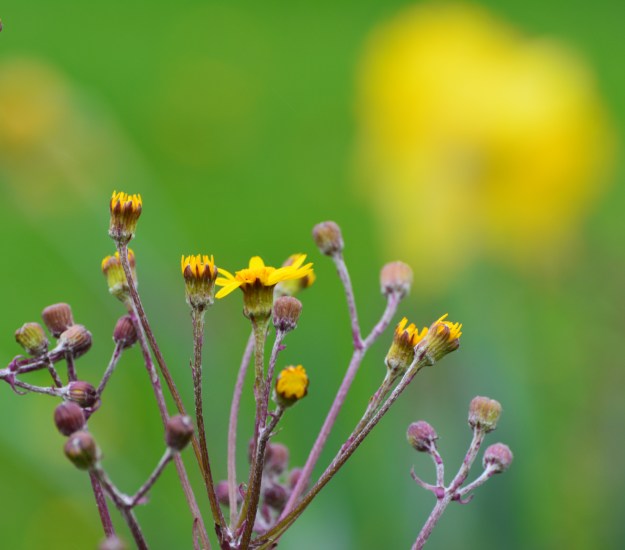As I wander through my decaying garden these days, it’s like a brown-out. All of the ornamental grasses have resorted to their buff winter color and almost all of the perennials are a mess of brown/black.
But there are two perennials that stand out in their still staying green color. Two native perennials that are not so well known and not so flashy but can be a welcome addition to the garden. That is assuming your garden is like mine: moisture-filled (aka poorly draining) and critter-filled (aka herds of visiting deer).
Let’s take a closer look at both of these plants.
Carex ‘grayi’
Common name: Gray sedge
Zone: 5-9
Size: 3′ x 2′
Bloom time: May – October
Exposure: Full to partial sun (performs best in full sun)
Soil: Wet, bog garden plant.
Native: Eastern U.S.
Deer resistant: Yes
Origin of name: Named after famed botanist Asa Gray from the 1800’s
I purchased these in bulk a few years back and sited them in a known wet spot, in full sun.
They’ve thrived here and have quickly doubled in size in only 2 years time.
The seed heads have a club-like shape and start out yellow/green before transforming to brown as fall/winter arrives.
I welcome the semi-evergreen nature of this grass-like perennial. The green stands out in a sea of deadness this time of year.
And when the light hits them just right in winter, the seed heads are reflected in the snow in a cool and funky way. I have no photos to prove this so you’ll just have to trust me until I can prove it to you.
Packera aurea
Common name: Golden Ragwort
Zone: 3-8
Size: 2.5′ x 1.5′
Bloom time: April
Exposure: Full to partial sun (thrives in partial shade)
Soil: Wet, bog garden plant.
Native: Eastern U.S.
Deer resistant: Nibbled a bit but never fully destroyed (fingers crossed)
Origin of name: Named after famed botanist John Packer
I went nuts and ordered 50+ plugs of this native perennial two years ago from the native plant purveyor, Izel. To date, I have zero regrets.
While they were small when first planted, they have rocketed in growth ever since.
And they bloomed like mad that first spring with the buds first appearing in early April. A time when I welcome any blooms in my garden.
And do they ever bloom their little heads off. Endless yellow daisy-like flowers completely inundate the plant.
I made sure to snip off the spent blooms immediately to prevent seeding as this is a potentially heavy seeder. We’ll see if I was successful or not this spring, although I would welcome some reseeding.
After cutting them all down to their basal foliage, they remain bright green in color and thrive all spring/summer and even into late fall as seen in the photo below.
That is assuming they remain consistently moist as they do not dig the dry soil.









